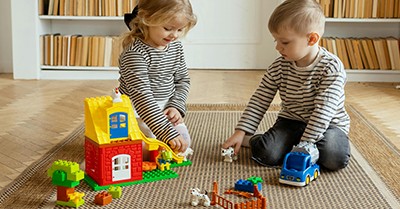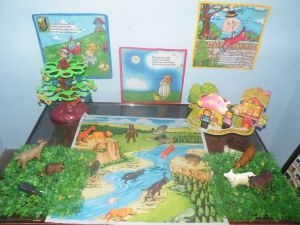Zoo-themed activities are a fantastic way to engage toddlers and preschoolers while teaching them about animals, habitats, and conservation. The following article provides information on Zoo Themed Activity Ideas, Zoo Themed Children's Books, Importance Of Zoo Theme, Goals For Zoo Theme, Linking To The EYLF and more.
Zoo Themed Activity Ideas
-
Animal Pretend Play: Encourage kids to move and sound like different zoo animals.
-
Zoo Sensory Bins: Fill bins with toy animals, sand, and water to create mini zoo environments.
-
Animal Crafts: Make paper plate lions, handprint elephants, or zebra-striped paintings.
-
Zoo Scavenger Hunt: Hide animal toys around the room and let kids find them.
-
Story Time: Read books about zoo animals and discuss their characteristics.
-
Animal Yoga: Teach kids simple yoga poses inspired by animals, like "cobra" or "downward dog."
-
Zoo Keeper Role Play: Set up a pretend zoo where kids can "feed" and "care" for stuffed animals.
-
Animal Footprint Art: Use toy animals to stamp footprints onto paper and discuss different tracks.
-
Zoo Keeper Dress-Up: Let kids wear hats, aprons, and pretend to care for stuffed animals.
-
Animal Sorting Game: Sort toy animals by habitat—jungle, savanna, ocean, etc.
-
Zoo-Themed Obstacle Course: Set up tunnels, balance beams, and jumping stations to mimic animal movements.
-
Animal Sound Guessing Game: Play animal sounds and have kids guess which zoo animal makes them.
-
DIY Zoo Enclosure: Use cardboard boxes to create mini zoo habitats for toy animals.
-
Feed the Animals Game: Toss bean bags or paper "food" into animal-themed containers.
-
Zoo-Themed Sensory Play: Fill bins with grass, water, and sand to represent different animal environments.
Zoo Theme Activities For An Integrated Curriculum







 Open ended questions cannot be responded to with one word answers such as yes or no. These types of questions enables a child to provide
Open ended questions cannot be responded to with one word answers such as yes or no. These types of questions enables a child to provide During your child’s preschool years, an important milestone begins to emerge. This is the development of pre-writing skills. Pre-writing skills are used to encourage, develop
During your child’s preschool years, an important milestone begins to emerge. This is the development of pre-writing skills. Pre-writing skills are used to encourage, develop Open ended materials enables children to play freely. They are objects that have no rules to follow, use or function. Raw materials that can be
Open ended materials enables children to play freely. They are objects that have no rules to follow, use or function. Raw materials that can be An Acknowledgment of the Country is a way of showing respect for the Traditional Owners and can be given by both non-Indigenous people and Aboriginal
An Acknowledgment of the Country is a way of showing respect for the Traditional Owners and can be given by both non-Indigenous people and Aboriginal Language plays an important role in a child’s development. It enables a child to communicate effectively with their family, learn at school, socialize with friends,
Language plays an important role in a child’s development. It enables a child to communicate effectively with their family, learn at school, socialize with friends, Like adults, children have to deal with their own stress in life. Moving house, starting a new school, preparing for a new sibling - these are
Like adults, children have to deal with their own stress in life. Moving house, starting a new school, preparing for a new sibling - these are Playdough is such a versatile material. It provides numerous benefits to children as they manipulate it, it is safe and soothing and provides children with
Playdough is such a versatile material. It provides numerous benefits to children as they manipulate it, it is safe and soothing and provides children with Teaching children about sustainability enables them to appreciate and respect the natural environment. Early childhood services can provide meaningful hand on learning experiences in order
Teaching children about sustainability enables them to appreciate and respect the natural environment. Early childhood services can provide meaningful hand on learning experiences in order Recycling is an important concept that teaches children to care for the environment. It encourages children to be responsible and show a growing appreciating for
Recycling is an important concept that teaches children to care for the environment. It encourages children to be responsible and show a growing appreciating for When children apply paint to paper, glue things together, or pound a lump of clay, they experiment with colour, shape design and texture.
When children apply paint to paper, glue things together, or pound a lump of clay, they experiment with colour, shape design and texture.



